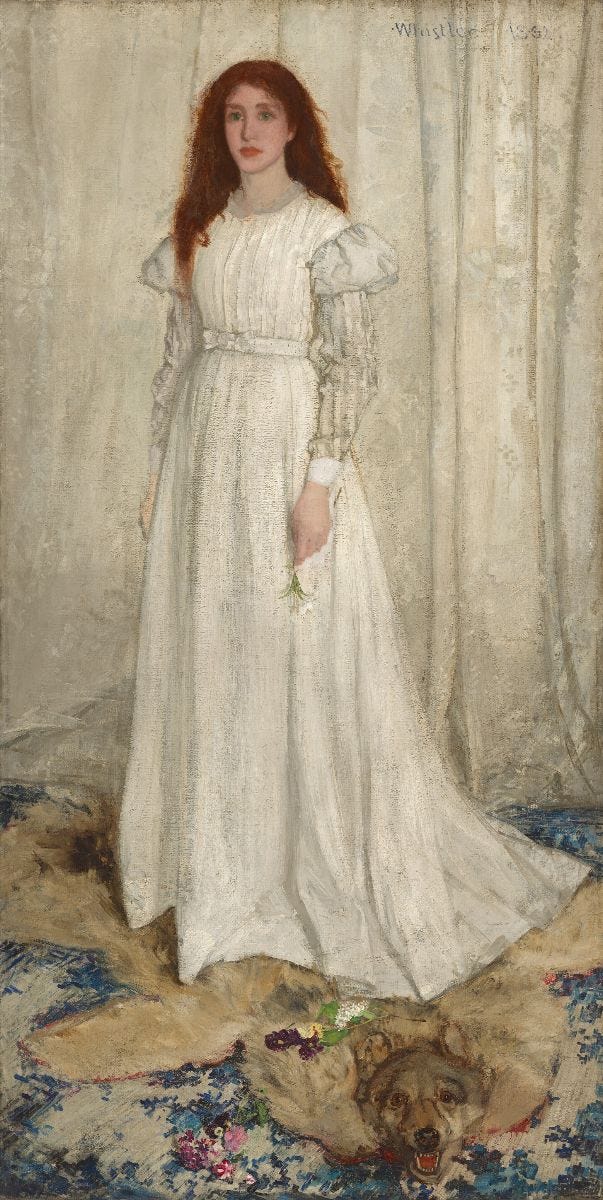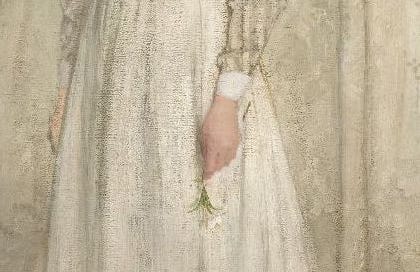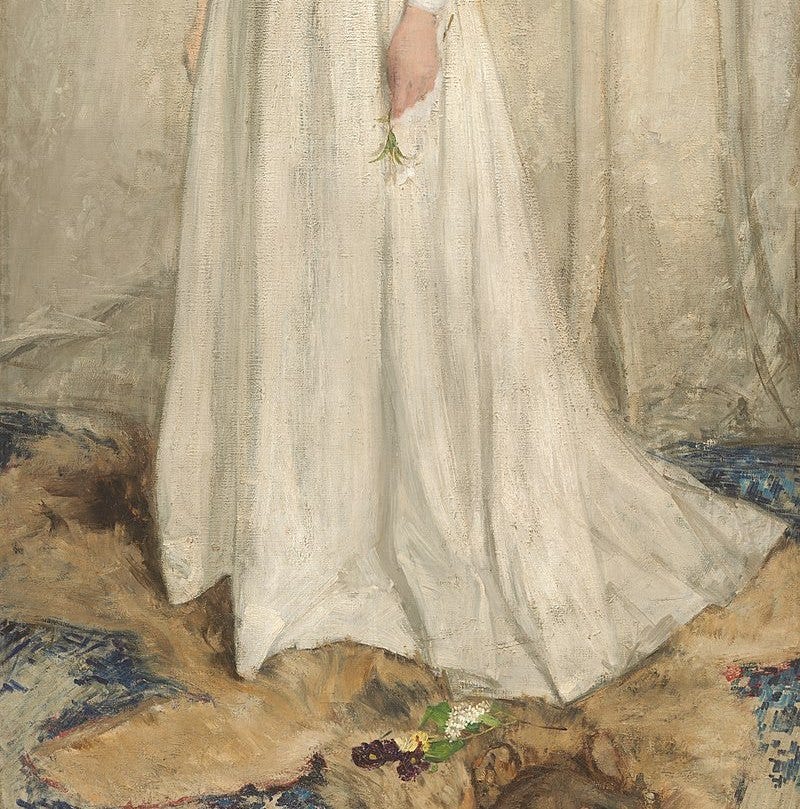Art for the Wilderness 4: Embracing Your Enoughness
Surrender yourself to the loveliness around you
This seven-week series explores what we can learn about navigating the wilderness from artists who engage with difficult experiences through their art.
Hello friend,
This week, we are going to hear from an artist who was rejected for his belief that art shouldn't have to serve a purpose.

James McNeill Whistler was excited when he finished painting The White Girl in 1862. It was with high expectations that he submitted the work to art competitions in London and Paris. In the nineteenth century art world, the juries of these competitions were the arbiters of taste, and they could make or break an artist’s career.
But both the London Royal Academy of Arts and the Paris Salon rejected Whistler’s painting. (In Paris, it was actually displayed in the infamous 1863 Salon des Refusés, an exhibition of the rejected art.)
And what was so objectionable about The White Girl? In these artistic contexts, paintings were supposed to be about something. The juries were looking for historical and literary narratives, or moral messages that taught viewers a lesson. But Whistler was clear that there was no deeper meaning in this painting, explaining that it “simply represents a girl dressed in white standing in front of a white curtain."
He was exploring art for art’s sake, a philosophy that claimed art was intrinsically valuable and didn’t need to have a function. What truly mattered were the work's aesthetic qualities and how they appealed "to the artistic sense of eye". Beauty, he argued, should be able to stand alone.
For Whistler, the actual subject of The White Girl was the interplay of the different tones of white, the textures, and the brushstrokes.
And that was enough.
Today, we are living in a capitalist culture that discourages us from embracing our own inherent enoughness.
We are told that what we do is what gives us value (and that we are never doing enough). We should be hustling harder, producing more, crafting compelling personal narratives. Our routines should be streamlined, our homes immaculate, our bodies optimized, our work meaningful, our desires fulfilled. If we feel pain or exhaustion, there are products we can buy to hack our way out. We are ceaselessly striving and perpetually behind.
And these cycles make us sick. They are based in the fear that we are not fundamentally safe or loved. We push ourselves beyond our limits in the attempt to earn our enoughness.
But our lives, like art, are intrinsically valuable.
What would it look like to apply the art for art's sake philosophy to our lives?
To practice life for life's sake would mean recognizing that we, by the fact of our existence, are enough. It would mean that our worth is independent of our function, and that it is safe to let ourselves rest.
This week, I invite you to embrace your enoughness right here and now. When you feel exhausted or anxious, let go of the need to shape the moment and instead let the moment hold you. Surrender yourself to loveliness.
The true power of this exercise comes from repetition, from repeatedly opening yourself up to the moment and letting yourself be held. It can be in little ways. I have been soothed by the purple of my shampoo bottle, a cheery yellow stickie note, the softness of a favorite sweater, a bird singing outside my window, and oh so many cloudscapes above my car on the drive to and from daycare.
Recently, after a particularly exhausting Sunday, my husband and I bundled up our toddler and went to a local sledding hill to try and redeem the day. We got to the top, and while my husband squeezed onto the tiny sled with our son, I plopped myself down at the top of a wooden stairway, claiming sanctuary on my step. I looked up at the sky, covered with the gentle pastel pinks and oranges of a late winter sunset. I was so tired and felt trapped under the weight of all the things left to do. But as I let the soft colors wash over me, I co-regulated with the sky. My senses let my racing mind know that, in an unshakeable way, I was enough.
The fifth installment of Art for the Wilderness will be sent out next Sunday.
Remember, our worth doesn’t come from what we do, but is intrinsic to our lovely selves.
Warmly,
KEEP EXPLORING
Read and watch more about The White Girl, and listen to audio about the artist's inspiration from music
Tricia Hersey founded The Nap Ministry in 2016 to explore rest as an act of resistance (and she's coming out with a new book)
Slow looking is a helpful technique for seeing art in new ways and can be applied to our daily lives
Next post (Week 5: That Instinct to Protect Your Body and Heart) →







